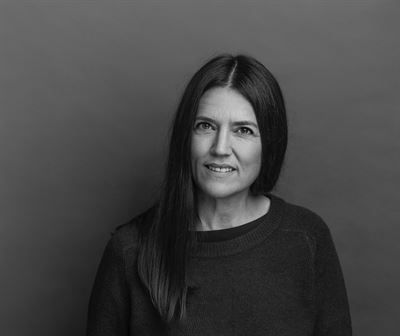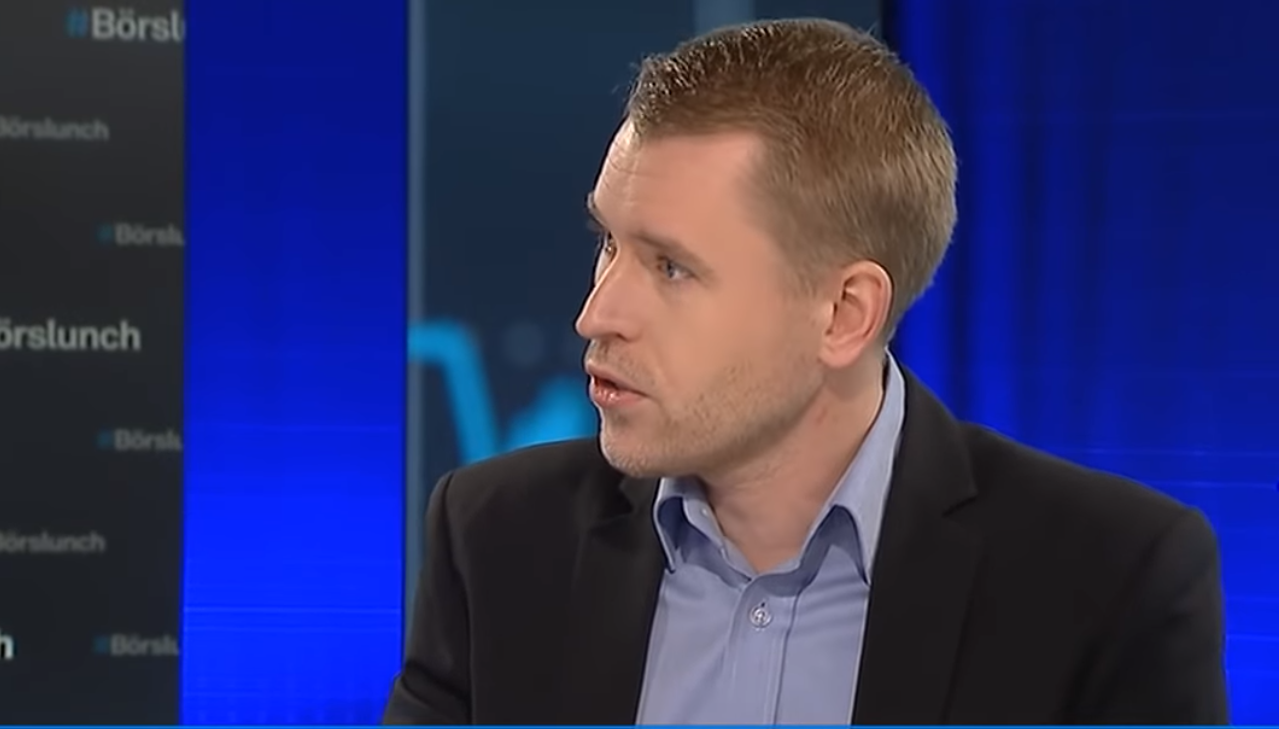Marknadsnyheter
Tagrisso reduced the risk of disease recurrence in the brain by 82% in the adjuvant treatment of early-stage EGFR-mutated lung cancer
ADAURA Phase III trial data at ESMO reinforce the proven clinical
activity of Tagrisso in treating central nervous system metastases
Results from a prespecified exploratory analysis of the positive ADAURA Phase III trial showed AstraZeneca’s Tagrisso (osimertinib) demonstrated a clinically meaningful improvement in central nervous system (CNS) disease-free survival (DFS) in the adjuvant treatment of patients with early-stage (IB, II and IIIA) epidermal growth factor receptor-mutated (EGFRm) non-small cell lung cancer (NSCLC), after complete tumour resection.
While up to 30% of all patients with NSCLC may be diagnosed early enough to have potentially curative surgery, disease recurrence is still common in early-stage disease.1-3 CNS recurrence, when cancer spreads to the brain, is a frequent complication of EGFRm NSCLC and these patients have an especially poor prognosis.4-5
Results were presented on 19 September 2020 during the Presidential Symposium of the European Society for Medical Oncology (ESMO) Virtual Congress 2020 (abstract #LBA1) and simultaneously published with the primary results in The New England Journal of Medicine.
This analysis showed that fewer patients treated with Tagrisso in the adjuvant setting had recurrence events or deaths compared to placebo (11% versus 46%). Among patients whose cancer recurred, 38% of those treated with Tagrisso had a metastatic recurrence compared to 61% of patients on placebo. Tagrisso showed an 82% reduction in the risk of CNS recurrence or death (based on a hazard ratio [HR] of 0.18; 95% confidence interval [CI] 0.10-0.33; p<0.0001). Median CNS DFS was not yet reached in either arm.
In a post-hoc analysis, the estimated probability of observing disease recurrence in the brain at 18 months for patients treated with Tagrisso was less than 1% versus 9% for placebo among patients who had not experienced another type of recurrence. On the primary endpoint of DFS in patients with Stage II and IIIA disease, Tagrisso in the adjuvant setting reduced the risk of disease recurrence or death by 83% (HR 0.17; 95% CI 0.12-0.23; p<0.0001).
Masahiro Tsuboi, MD, PhD, director of the Department of Thoracic Surgery and Oncology, National Cancer Center Hospital East in Japan, and a principal investigator in the ADAURA Phase III trial, said: “It’s time to change the notion that treatment for early-stage EGFR-mutated lung cancer ends after surgery, since recurrence rates are still very high even after adjuvant chemotherapy. These new data showing low rates of recurrence, particularly in the brain, combined with the remarkable disease-free survival benefit, clearly demonstrate that Tagrisso provides patients with more time living cancer-free.”
José Baselga, Executive Vice President, Oncology R&D, said: “Once lung cancer has spread to the brain, outcomes are typically devastating for patients. We are now seeing Tagrisso expanding on its proven efficacy in treating progression in the brain in the metastatic setting as a result of its ability to cross the blood-brain barrier. The striking new data show that Tagrisso prevents the development of brain metastases in patients with early disease and reinforce that this medicine is truly transformative for patients with EGFR-mutated lung cancer. Tagrisso should become the standard of care in the adjuvant setting, just as it is for patients with metastatic disease around the world.”
Summary of exploratory results on CNS recurrence in the ADAURA Phase III trial
| Tagrisso n=339 |
Placebo n=343 |
|
| CNS DFS | ||
| HR (95% CI) | 0.18 (0.10-0.33); | |
| p-value | p<0.0001 | |
| CNS DFS events, patients (%): | 6 (2%) | 39 (11%) |
| CNS recurrence | 4 (1%) | 33 (10%) |
| Deathi | 2 (1%) | 6 (2%) |
| DFS events, patients (%): | 37 (11%) | 159 (46%) |
| Type of disease recurrence | n=37 | n=157 |
| Local/regional only | 23 (62%) | 61 (39%) |
| Distant | 14 (38%) | 96 (61%) |
| Deathii | 0 | 2 (1%) |
- Death in absence of CNS disease recurrence, or death within two visits of baseline where the patient has no evaluable assessments or no baseline data.
- Death in the absence of disease recurrence (any site), or death within two visits of baseline where the patient has no evaluable assessments or no baseline data.
The safety and tolerability of Tagrisso in this trial was consistent with previous trials in the metastatic EGFRm NSCLC setting. Adverse events at Grade 3 or higher from all causes occurred in 10% of patients in the Tagrisso arm versus 3% in the placebo arm as assessed by investigators.Tagrisso is not currently approved in the adjuvant setting in any country. Tagrisso received Breakthrough Therapy Designation in July 2020 for the adjuvant treatment of patients with early-stage EGFRm NSCLC after complete tumour resection with curative intent. Tagrisso is approved for the 1st-line treatment of patients with locally advanced or metastatic EGFRm NSCLC and for the treatment of locally advanced or metastatic EGFR T790M mutation-positive NSCLC in the US, Japan, China, the EU and many other countries around the world.
Lung cancer
Lung cancer is the leading cause of cancer death among both men and women, accounting for about one-fifth of all cancer deaths.6 Lung cancer is broadly split into NSCLC and small cell lung cancer, with 80-85% classified as NSCLC.7 The majority of all NSCLC patients are diagnosed with advanced disease while approximately 25-30% present with resectable disease at diagnosis.1-3
For those with resectable tumours, the majority of patients eventually develop recurrence despite complete tumour resection and adjuvant chemotherapy.8 Early-stage lung cancer diagnoses are often only made when the cancer is found on imaging for an unrelated condition.9-10
Approximately 10-15% of NSCLC patients in the US and Europe, and 30-40% of patients in Asia have EGFRm NSCLC.11-13 These patients are particularly sensitive to treatment with EGFR-tyrosine kinase inhibitors (TKIs) which block the cell-signalling pathways that drive the growth of tumour cells.14
ADAURA
ADAURA is a randomised, double-blinded, global, placebo-controlled Phase III trial in the adjuvant treatment of 682 patients with Stage IB, II, IIIA EGFRm NSCLC following complete tumour resection and adjuvant chemotherapy as indicated. Patients were treated with Tagrisso 80mg once-daily oral tablets or placebo for three years or until disease recurrence.
The trial enrolled in more than 200 centres across more than 20 countries, including the US, in Europe, South America, Asia and the Middle East. The primary endpoint is DFS in Stage II and IIIA patients and a key secondary endpoint is DFS in Stage IB, II and IIIA patients. The data readout was originally anticipated in 2022. The trial will continue to assess overall survival.
Tagrisso
Tagrisso (osimertinib) is a third-generation, irreversible EGFR-TKI with clinical activity against central nervous system metastases. Tagrisso 40mg and 80mg once-daily oral tablets have received approval in the US, Japan, China, the EU and many countries around the world for 1st-line EGFRm advanced NSCLC and EGFR T790M mutation-positive advanced NSCLC.
AstraZeneca in lung cancer
AstraZeneca has a comprehensive portfolio of approved and potential new medicines in late-stage development for the treatment of different forms of lung cancer spanning different histologies, several stages of disease, lines of therapy and modes of action.
AstraZeneca aims to address the unmet needs of patients with EGFRm tumours as a genetic driver of disease with the approved medicines Iressa (gefitinib) and Tagrisso and its ongoing Phase III trials LAURA, NeoADAURA and FLAURA2.
AstraZeneca is committed to addressing tumour mechanisms of resistance through the ongoing Phase II trials SAVANNAH and ORCHARD, which test Tagrisso in combination with savolitinib, a selective inhibitor of c-MET receptor tyrosine kinase, along with other potential new medicines.
AstraZeneca in oncology
AstraZeneca has a deep-rooted heritage in oncology and offers a quickly growing portfolio of new medicines that has the potential to transform patients’ lives and the Company’s future. With seven new medicines launched between 2014 and 2020, and a broad pipeline of small molecules and biologics in development, the Company is committed to advance oncology as a key growth driver for AstraZeneca focused on lung, ovarian, breast and blood cancers.
By harnessing the power of four scientific platforms – Immuno-Oncology, Tumour Drivers and Resistance, DNA Damage Response and Antibody Drug Conjugates – and by championing the development of personalised combinations, AstraZeneca has the vision to redefine cancer treatment and one day eliminate cancer as a cause of death.
AstraZeneca
AstraZeneca (LSE/STO/NYSE: AZN) is a global, science-led biopharmaceutical company that focuses on the discovery, development and commercialisation of prescription medicines, primarily for the treatment of diseases in three therapy areas – Oncology, Cardiovascular, Renal & Metabolism, and Respiratory & Immunology. Based in Cambridge, UK, AstraZeneca operates in over 100 countries and its innovative medicines are used by millions of patients worldwide. Please visit astrazeneca.com and follow the Company on Twitter @AstraZeneca.
Contacts
For details on how to contact the Investor Relations Team, please click here. For Media contacts, click here.
References
1. Cagle P, et al. Lung Cancer Biomarkers: Present Status and Future Developments. Archives Pathology Lab Med. 2013;137:1191-1198.
2. Le Chevalier T. Adjuvant Chemotherapy for Resectable Non-Small-Cell Lung Cancer: Where is it Going? Ann Oncol. 2010;21:196-8.
3. Datta D, et al. Preoperative Evaluation of Patients Undergoing Lung Resection Surgery. Chest. 2003;123: 2096–2103.
4. Rangachari, et al. Brain Metastasesin Patientswith EGFR-Mutatedor ALK-RearrangedNon-Small-Cell LungCancers. LungCancer. 2015;88,108–111.
5. Ali A, et al. Survival of Patients with Non-small-cell Lung Cancer After a Diagnosis of Brain Metastases. CurrOncol. 2013;20(4):e300-e306.
6. World Health Organization. International Agency for Research on Cancer. Lung Fact Sheet. Available at https://gco.iarc.fr/today/data/factsheets/cancers/15-Lung-fact-sheet.pdf. Accessed September 2020.
7. LUNGevity Foundation. Types of Lung Cancer. Available at https://www.lungevity.org/about-lung-cancer/lung-cancer-101/types-of-lung-cancer. Accessed September 2020.
8. Pignon et al. Lung Adjuvant Cisplatin Evaluation: A Pooled Analysis by the LACE Collaborative Group. J Clin Oncol 2008;26:3552-3559.
9. Sethi S, et al. Incidental Nodule Management – Should There Be a Formal Process?. Journal of Thorac Onc. 2016:8;S494-S497.
10. LUNGevity Foundation. Screening and Early Detection. Available at: https://lungevity.org/for-patients-caregivers/lung-cancer-101/screening-early-detection#1. Accessed September 2020.
Szumera-Ciećkiewicz A, et al. EGFR Mutation Testing on Cytological and Histological Samples in 11. Non-Small Cell Lung Cancer: a Polish, Single Institution Study and Systematic Review of European Incidence. Int J Clin Exp Pathol. 2013:6;2800-12.
12. Keedy VL, et al. American Society of Clinical Oncology Provisional Clinical Opinion: Epidermal Growth Factor Receptor (EGFR) Mutation Testing for Patients with Advanced Non-Small-Cell Lung Cancer Considering First-Line EGFR Tyrosine Kinase Inhibitor Therapy. J Clin Oncol. 2011:29;2121-27.
13. Ellison G, et al. EGFR Mutation Testing in Lung Cancer: a Review of Available Methods and Their Use for Analysis of Tumour Tissue and Cytology Samples. J Clin Pathol. 2013:66;79-89.
14. Cross DA, et al. AZD9291, an Irreversible EGFR TKI, Overcomes T790M-Mediated Resistance to EGFR Inhibitors in Lung Cancer. Cancer Discov. 2014;4(9):1046-1061.
Christina Malmberg Hägerstrand
Presschef AstraZeneca AB, Nordic
+ 46 8 552 53 106
christina.malmberghagerstrand@astrazeneca.com
Marknadsnyheter
Regeringen föreslår lättnader i byggkraven för studentbostäder
Regeringen har beslutat om en lagrådsremiss med förslag till lättnader i byggkraven för studentbostäder. Syftet är att öka möjligheterna till flexibilitet vid byggandet.
– På många studieorter är det svårt för studenter att hitta boende. Därför behöver byggregelverket förenklas. Syftet är att möjliggöra för fler studentbostäder genom sänkta byggkostnader och ökad flexibilitet, säger infrastruktur- och bostadsminister Andreas Carlson.
Förslaget innebär att det blir möjligt att göra undantag från kraven på tillgänglighet och användbarhet i en byggnad som innehåller studentbostäder. Undantagen ska kunna tillämpas vid både nyproduktion och vid ändring av en byggnad.
Det ska vara möjligt att göra undantag för högst 80 procent av studentbostäderna i ett byggprojekt. Minst 20 procent av studentbostäderna ska fortfarande uppfylla gällande krav på tillgänglighet och användbarhet för personer med nedsatt rörelse- eller orienteringsförmåga.
Lagändringen ger större flexibilitet vid byggande av studentbostäder och skapar fler tänkbara sätt att utforma planlösningar. Till exempel kan bostadsytan minskas och fler bostäder rymmas inom en given yta.
De föreslagna undantagen ska inte hindra personer med funktionsnedsättning att vara delaktiga i sociala sammanhang. En studentbostad som omfattas av undantagen ska kunna besökas av en person med nedsatt rörelse- eller orienteringsförmåga.
Regeringen breddar också definitionen av studentbostäder till att inkludera all vuxenutbildning för att göra det möjligt för fler kommuner att erbjuda studentbostäder.
Förslagen föreslås träda i kraft den 1 juli 2025.
Lagrådsremissen: Lättnader i byggkraven för studentbostäder – Regeringen.se
Presskontakt
Ebba Gustavsson
Pressekreterare hos infrastruktur- och bostadsminister Andreas Carlson
Telefon (växel) 08-405 10 00
Mobil 076-12 70 488
ebba.gustavsson@regeringskansliet.se
Marknadsnyheter
“Vi behöver tillsammans enas om vettiga avtal, som sätter standard för branschen”


Sveriges Radios Kulturnytt gör just nu en mycket välkommen granskning av villkoren i musikbranschen. Igår lyftes artisten Siw Malmkvists situation med ett avtal som inte förnyats på över 60 år. Hennes situation är tyvärr långt ifrån unik. Musikerförbundet har länge uppmärksammat att majorbolagen fortsätter att betala extremt låga royaltynivåer till artister vars kontrakt skrevs på 1960-talet – en tid då digital streaming inte existerade.
– Jag kan intyga att artisterna som talar ut i P1 är långt ifrån ensamma om sin situation och vi uppmanar deras artistkollegor att gå ut med sitt tydliga stöd till de som vågar bryta tystnaden om oskäliga ersättningar, säger Musikerförbundets ordförande Karin Inde.
Musiker och artister skapar det värde som skivbolagen tjänar pengar på, men ändå ser vi gång på gång hur bolagen behåller stora delar av intäkterna. Att en av Sveriges mest folkkära artister, med en karriär som sträcker sig över decennier, fortfarande har en oskälig royalty är ett tydligt bevis på branschens obalans.
– Tystnadskulturen kring prissättning är enbart bra för bolagen. Både artister och musiker skulle verkligen tjäna på att dela med sig till varandra om hur betalningar och dealar verkligen ser ut. Förstås i trygga, egna rum. Det är bara bolagen som tjänar på att vi inte pratar med varandra om pengar, säger Karin Inde.
Stort tack till de modiga artister som ser till att lyfta problematiken! För att vi ska få till en i grunden mer rättvis musikbransch behöver de stora parterna i sammanhanget – skivbolagen, musikerna och artisterna – göra som de flesta andra svenska branscher lyckas med:
– Vi behöver tillsammans enas om vettiga och balanserade avtal, som sätter standard för branschen. Musikerförbundet är redo att göra vår del i arbetet för bättre villkor i musikbranschen, frågan är om skivbolagen är redo, säger Karin Inde.
Karin Inde
Förbundsordförande
karin.inde@musikerforbundet.se
+46 (0)704447228
Musikerförbundet är fackförbundet för professionella musiker och artister. Vi arbetar för förbättrade upphovsrättsliga och arbetsrättsliga villkor och för att våra medlemmar ska få en rättvis del av de värden de skapar i samhället.
Marknadsnyheter
Bönor från egen kaffeskog, sump till jord – Viking Lines nya kaffe gör gott på många olika sätt


Viking Lines resenärer dricker varje år 8,5 miljoner koppar kaffe. Nu satsar rederiet på ett helt nytt kaffe som ger minskade klimatutsläpp och bättre levnadsvillkor för odlarna. Kaffet från Slow Forest odlas på rederiets egen odling i Laos utan kemiska gödningsmedel, handplockas och rostas därefter i Danmark.
Allt kaffe som serveras på Viking Lines fartyg är nu hållbart producerat Slow Forest-kaffe, odlat på rederiets 75 hektar stora odling på högplatåerna i Laos och rostat i Danmark. Kaffeplantorna odlas bland träd på återbeskogad mark, i stället för på traditionellt skövlade plantager. Viking Lines odling ligger i en kolsänka där målsättningen är att plantera 30 000 träd, vilket innebär nästan 400 träd per hektar. Kaffeskogen förbättrar också den lokala biologiska mångfalden i området.
Odlingen, bearbetningen och rostningen av kaffet hanteras av Slow Forest Coffee. För företaget är det viktigt att produktionskedjan är rättvis och transparent. Utöver miljöfördelarna erbjuder Slow Forest bättre lönevillkor och sjukersättning för byns odlare.
”Den traditionella kaffetillverkningens koldioxidavtryck är stort och merparten av intäkterna går till Europa i stället för produktionsländerna. Vi ville göra annorlunda. Våra kunder vill göra hållbara val, och nu kan de njuta av sitt kaffe med bättre samvete än någonsin tidigare,” berättar Viking Lines restaurangchef Janne Lindholm.
Bönorna till Slow Forest-kaffet får sakta mogna i skuggan av träden, utan kemiska gödningsmedel. De plockas också för hand, vilket avsevärt förbättrar kaffets kvalitet och smak. Viking Lines nya kaffe består till 100 procent av Arabica-bönor, med en balanserad syrlighet samt smak av nötter och choklad. Rostningsprofilen har skapats av den världsberömda danska rostningsmästaren Michael de Renouard.
”Vi valde en mörkrost till fartygets kaffe, vilket passar både finländarnas och svenskarnas nuvarande smakpreferenser gällande rostning. Finländarnas smak gällande kaffe har under de senaste åren utvecklats mot en mörkare rostning. Innan vi gjorde vårt slutgiltiga val testades det nya kaffet i Viking Cinderellas bufférestaurang och personalmässen – och båda testgrupperna gav toppbetyg. Då 8,5 miljoner koppar kaffe bryggs varje år kan inget lämnas åt slumpen!” säger Janne Lindholm.
Viking Lines hållbarhetsmål stannar inte vid produktionskedjan. Kaffesump från fartygen återvinns nämligen som råmaterial för trädgårdsjord. Detta minskar avsevärt användningen av jungfrulig torv vid tillverkningen av mylla.
”Vi har som mål att allt som tagits ombord på fartygen som är möjligt att återvinna ska återanvändas eller återvinnas. Det gäller inte bara kaffet utan även matavfall och till exempel textilier som tas ur bruk. Ett bra exempel på vårt livscykeltänkande är att frityrolja från fartygets restauranger blir till biobränsle för den finska sjöfartsindustrin,” säger Viking Lines hållbarhetschef Dani Lindberg.
Slow Forest Coffee – 5 fakta:
- Slow Forest Coffee är ett kaffeföretag som verkar i Laos, Vietnam och Indonesien i samarbete med över 500 lokala kaffeodlare.
- Företaget grundades år 2019 av Pinja Puustjärvi, driven av en vilja att skydda skogarna i Laos och stötta lokala odlare. Puustjärvi bodde som barn i Laos på grund av sin fars arbete.
- Kaffet odlas i restaurerade kaffeskogar, som binder stora mängder kol och ökar den biologiska mångfalden.
- Det är viktigt för företaget att produktionskedjan är ansvarsfull och transparent, samt att verksamheten gynnar både miljön och de lokala samhällena.
- Slow Forest Coffee betalar odlarna bättre ersättning än genomsnittet i Laos och erbjuder förmåner som underlättar deras liv: förskottsbetalningar, utbildning och möjligheten att låna pengar från en krisfond.
Mera infomation om Slow Forest Coffee här
Tilläggsinformation:
Janne Lindholm, restaurangchef
janne.lindholm@vikingline.com, tel. +358 400 744 806
Dani Lindberg, hållbarhetschef
dani.lindberg@vikingline.com, tel. +358 18 27 000
Johanna Boijer-Svahnström, informationsdirektör
johanna.boijer@vikingline.com, tel. +358 18 270 00
Christa Grönlund, informationschef
christa.gronlund@vikingline.com, tel. +358 9 123 51
-
Analys från DailyFX10 år ago
EUR/USD Flirts with Monthly Close Under 30 Year Trendline
-

 Marknadsnyheter2 år ago
Marknadsnyheter2 år agoUpptäck de bästa verktygen för att analysera Bitcoin!
-
Marknadsnyheter5 år ago
BrainCool AB (publ): erhåller bidrag (grant) om 0,9 MSEK från Vinnova för bolagets projekt inom behandling av covid-19 patienter med hög feber
-
Analys från DailyFX12 år ago
Japanese Yen Breakout or Fakeout? ZAR/JPY May Provide the Answer
-

 Marknadsnyheter2 år ago
Marknadsnyheter2 år agoDärför föredrar svenska spelare att spela via mobiltelefonen
-
Analys från DailyFX12 år ago
Price & Time: Key Levels to Watch in the Aftermath of NFP
-
Analys från DailyFX8 år ago
Gold Prices Falter at Resistance: Is the Bullish Run Finished?
-

 Nyheter7 år ago
Nyheter7 år agoTeknisk analys med Martin Hallström och Nils Brobacke

